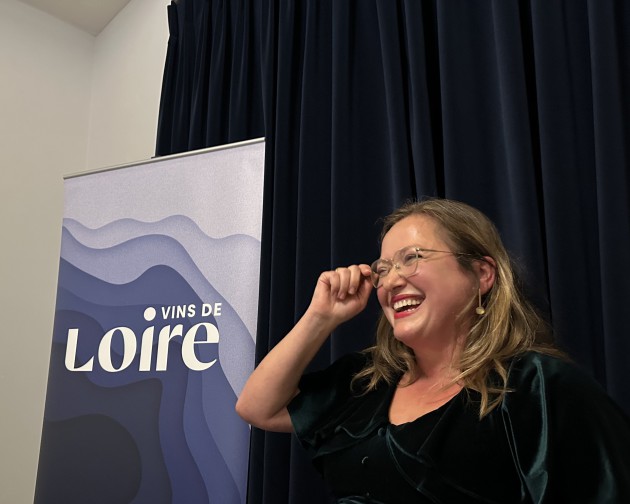
Celebrating 50 years of Crémant de Loire
At the stylish Searcys bar in St Pancras, Vins de Loire celebrated 50 years of the Crémant de Loire AOC.
Although sparkling wine has been produced in the Loire Valley for hundreds of years, the AOC designation has help provide momentum for the region to become the second largest sparkling region in France. Across the region, 22m bottles of wine under the Crémant de Loire AOC label are produced per year, with around 50% of this production exported.
The style has gained much popularity in recent years in the UK market thanks to its impressive quality proposition relative to its value, as wine writer and educator Victoria Daskal (pictured) explained. All wines on show during the event retail for £20 and under.
Although sales in recent years of Loire wines to the UK have been stable, growth in sparkling sales from the region offset declines in other categories. During 2024 alone volume exports to the UK rose 40% to 11,600hls. The UK accounts for 8% of exported Crémant de Loire, with the country ranking second only to Germany as an export destination.
The suitability of the Loire Valley for sparkling as Daskal described, is in part thanks to its soil composition, with chalky soils in the Touraine and Saumur regions akin to those seen in Champagne. To meet the AOC designation, grapes must be hand harvested, a classic method fermentation must be used as well as a minimum nine months of lees-ageing (many producers lees age for up to 24 months).
The first three wines on show were from large Crémant producers all hailing from Saumur. Although there are 600 producers of the style across the Loire, much of the production comes from a handful of heavyweights.
First up was 1851-founded producer Bouver Ladubay’s Blanc de Blancs 2023. Producing 7m bottles per year, the estate was founded by husband and wife, Etienne Bouvet and Celestine Ladubay. Bouvet had previously worked for Jean-Baptitse Ackerman, the Belgian producer who introduced classic method sparkling to the region in 1811.
Bollinger-owned Langlois-Chateau’s L’Extra par Langlois Brut is a non-vintage expression of 60% Chenin Blanc and 40% Chardonnay. In a case of good timing, the famed Champagne house bought Saumur’s Langlois-Chateau in 1973, 2 years before the beginning of the Crémant de Loire AOC. The fresh, bright expression is typical of the region’s Crémant, with Daskal explaining this is a style producers seek to deliver.
She expanded: “You'll notice that a lot of the time the wines are non-vintage or the latest vintage – they're really best when they're drunk in the first one-to-three years. In a world where we're almost sometimes taught that older vintages are better, this is a region that embraces like that freshness and vivaciousness of their wines.”
The final Saumur-producer being showcased was Gratien & Meyer. Their Crémant de Loire includes 10% Cabarnet Franc in the blend, alongside 50% Chenin Blanc and 40% Chardonnay. Producing 14.5m bottles of wine per year, the producer ages its wines in 5km of underground cellars allowing wines to be stored at between 11-12C, the desired storage temperature for the style.
A smaller producer on show was Domaine des Hauts Perrays from the Anjou region. Their rosé expression of Crémant was potentially the most popular wine of the evening, a salmon-hued wine with notes of red fruit and an enjoyable roundness on the palate (the latter characteristic understandable as it is lees-aged for 18 months). The wine would be an excellent complement to cheese, highlighting the overall versality of the style. Carbernet Franc makes up 65% of the wine along with 35% Chenin Blanc, all drawn from the darker, schist soil of this part of Anjou.




